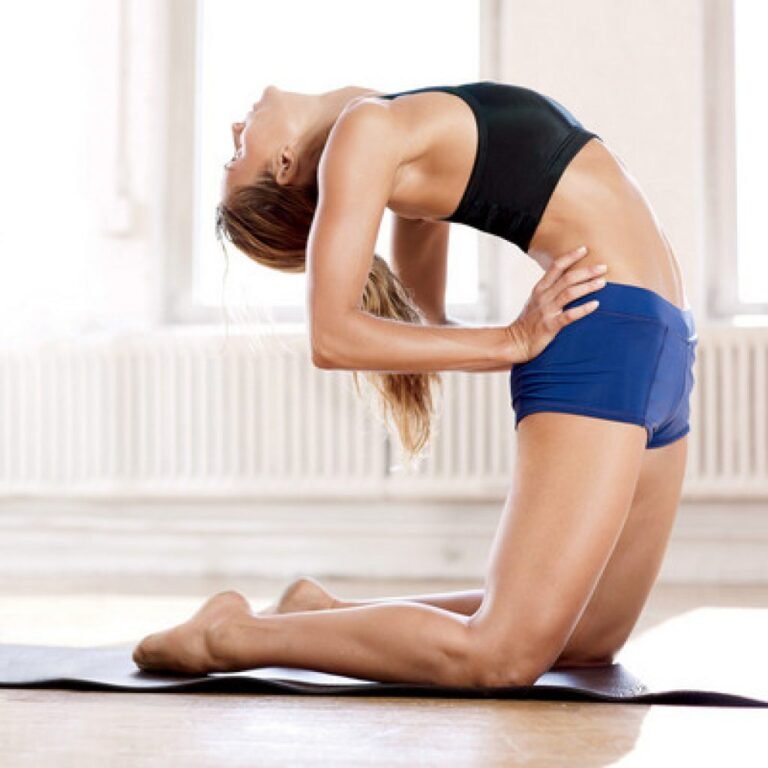The most dangerous fat is around the organs, deep in the abdomen. Fat in the abdominal area operates differently from the fat else of the body. It has more blood supply as well as more receptors for cortisol, a stress hormone. Cortisol levels increase and fall throughout the day, but when you are under constant pressure, the amount of hormone you produce remains increased. With high pressure and, consequently, high levels of cortisol, more fat deposited in the abdominal area, since there are more cortisol receptors there
“If stress levels are high, abdominal fat will increase.”
Yoga Asanas to reduce abdominal fat
These exercises can help postmenopausal women get rid of this intra -abdominal fat and, in the process, reduce the risk for certain chronic diseases.
Pavan-Muktasan:
Time: 1/2 minutes each foot.
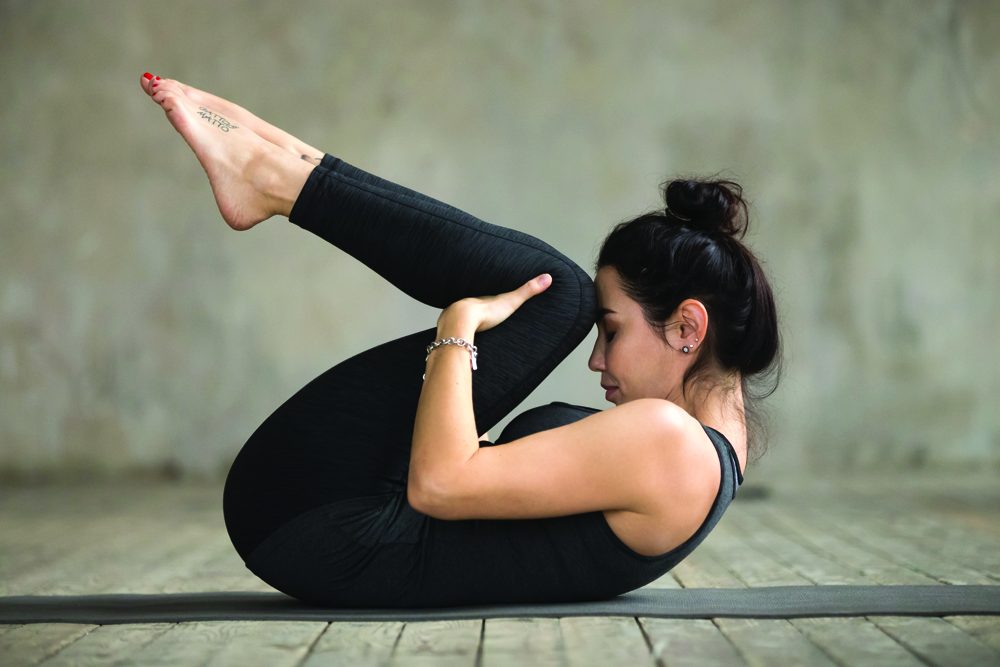
Method: Lie on your back. Breathing in. Then fold the left foot off the knees. Keep the fingers together and bring the folded foot to touch the stomach. Lift the head and touch the nose on the knee. The other foot remains straight. Keep your breath. Come to the original position and leave the breath. Follow the same for the other foot.
NOTE: This asana can also be done with two knees folded.
Benefits: Removes the gas from the abdomen and reduces abdominal fat. It increases the flexibility of the knees and hips.
Bhujangasan:
Time: 1/2 minutes.
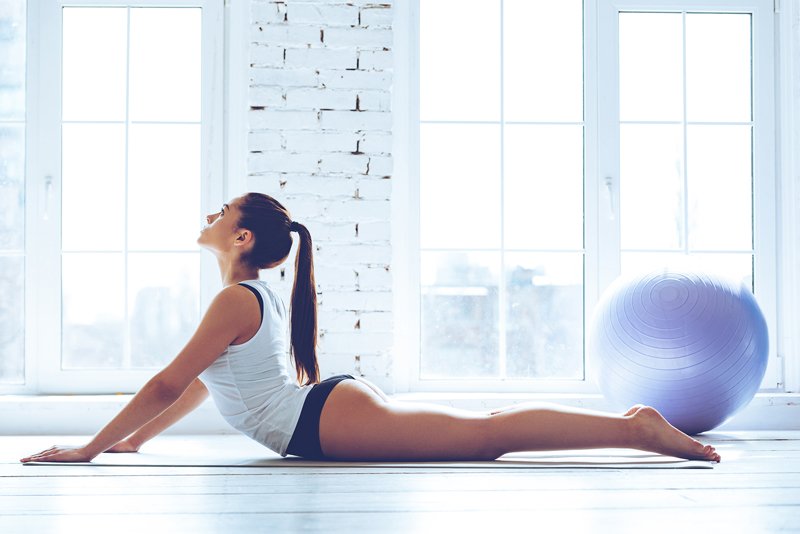
Method: Lie on your stomach, front on the ground, hands under your shoulders. Raise the upper part of your body with the rear muscle force, head upwards. Do not get the help of hands, they may stay on the ground or hold on the back above the hips.
Benefits: It helps maintain the dorsal spine elastic and strong. The fan due to excess star can be relieved. It greatly helps to reduce abdominal fat.
Dhanurasan- the bow
Time: 1/2 minute
Method: Lie on your stomach. Bend your knees, keep your ankles. Pull your hands and push with your feet, knees together, until the trunk forms a bow with only the stomach on the ground. I look up. After the release of the posture, lie for a while at Shavasana.
Benefits: Reduces abdominal fat. Compression of the spine, pressing the nerves with the shoulder plates, minimizes blood circulation while in Asana. But when the posture is released, a greater blood supply is directed to these same areas, increasing the flexibility of the spine and increasing vitality.
Paad-Pashchimottanasan:
Time: 2 minutes
Method: Lie on your back, your feet straight, hands over the head, hands together, palms they see on. Sit, take hands over the head, back straight, then bend forward to hold the big fingers, the head between the hands and to touch the knees.
Benefits: Reduces abdominal fat. It removes the wind from the intestines and increases appetite.
The lifting of the stomach, the abdominal lift (Uddyiana Bandha):
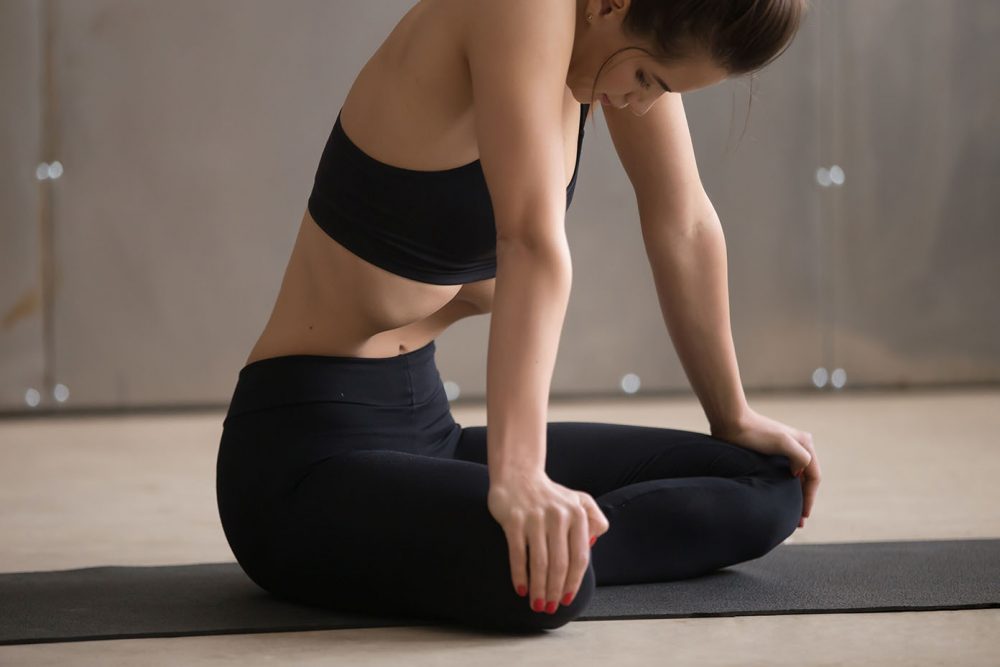
Method: The lifting of the stomach consists of two separate exercises.
First exercise. While standing with your feet for one foot away and your knees slightly bent, they lean forward a little of the waist and place your hands just above your knees. Inhale deeply by pressing your belly forward and then exhale by pressing your stomach. Don’t take another breath. Instead, push your stomach even more so that it becomes hollow and hold your breath for about ten seconds.
Second Exercise: Do the same as above, but instead of holding your stomach after exhaustion, quickly push your stomach in and out ten times without taking another breath. Stand straight and repeat normal breathing.
Benefits:
- This asana plagues and emphasizes the internal organs in the abdominal area.
- It also plagues the heart, making it the strongest, most effective pump. Your traffic will improve and you will be less likely to have a heart attack.
- It relieves constipation, gas, indigestion and liver problem.
- It highlights the nerves in the area of the solar grid.
- It reduces abdominal fat and strengthens abdominal muscles.
- It helps the adrenal and sexual glands properly function.
- It develops spiritual power.
Dandayamana-Dhanurasana-Standing Bow Pulling Pose:
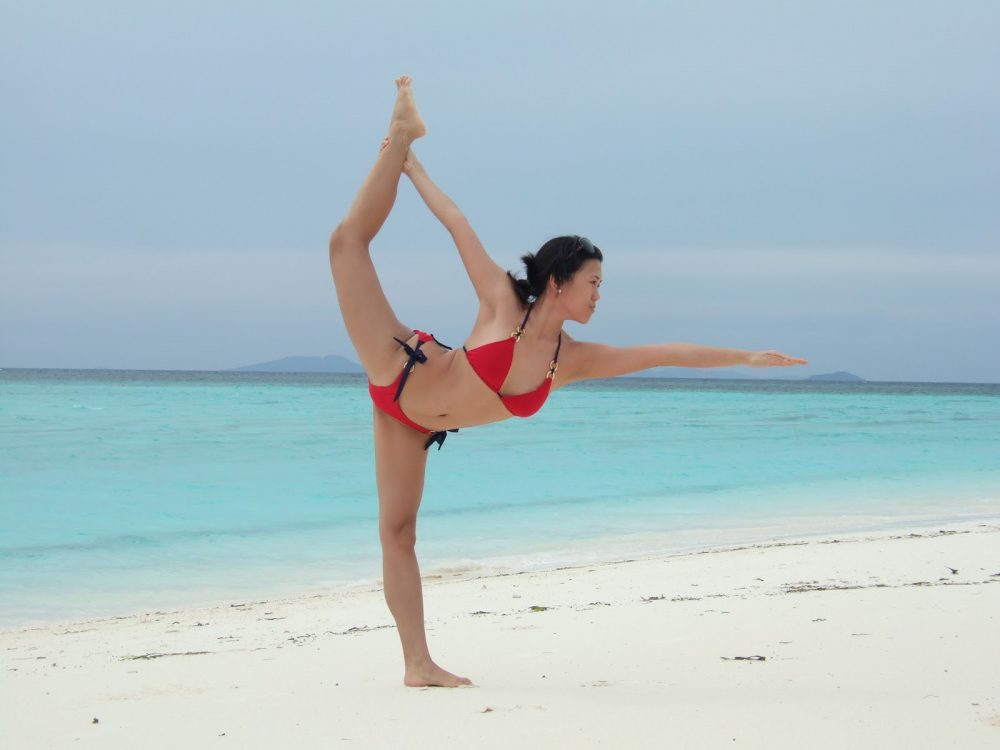
Method:
- Start at Tadasana, Mountain Pose
- Inhale the right hand up, keeping it rooted in the shoulder socket, but extends through the fingers.
- Bend the left arm so that the elbow is close to the body and the fingers are away from the body, the palm that sees in the sky.
- Insect the muscles of your right foot as you bend the left foot behind you and grab the inside of your foot with your left hand.
- Draw both knees together by keeping the t -shirt.
- Exhale, press your left foot in your hand, extends from the left upper thigh. As the foot rises it begins to depend on your hips, bringing your upper body parallel to the ground.
- Allow the heart to melt as the left hip of the bone and the shoulder soften and deliver.
- Get through the ball of your left legs as your upper body reaches forward.
- Find the arch in the spine to be equal throughout its extension through the heart and rooting the sky down, away from the body.
- To release: exhale, return to posture and repeat on the other side.
Benefits: It enhances thighs, buttocks, hips, abdomen and weapons, reduces abdominal fat, helps manage anorexia. Good for posture and general care. It helps to treat tennis elbow and frozen shoulder.
Essay practice Souranamamam Early in the morning, as the morning and evening sun radiates more ultraviolet rays. Even in the West, doctors use the sun’s rays as a powerful therapeutic factor in the treatment of diseases. They call it sunbathing. Suryanamaskar is a combined process of ASANA yoga and breathing. It reduces abdominal fat, gives flexibility to the spine and extremities and increases breathing. There are twelve sites of the spine, each extending to different joints and giving different movements to the spine, which is forward and backwardly with a deep breathing.
Yoga’s delivery cooperate the belly with the first three of the seven chakras that arise along the core of the body. These chakra are muradhara at the base of the spine, which are attached to the sacred nerve grid. Swadhisthana, associated with reproductive organs and attached to Parastatic Nerve Plexus. and manipura in the navel, which is connected to the solar grid.
The most important thing to do is to plan yourself mentally. Do not use a scale to measure your progress. Follow a healthy low fat diet.
Refusal
The content is not intended to be a substitute for professional medical advice, diagnosis or treatment. Always seek the advice of your doctor or other specialized health provider with any questions you may have about a medical condition.
